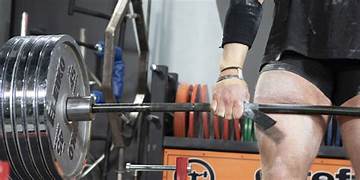
10 Best Alternatives to Squats and Deadlifts
Squats and deadlifts are powerful, but they’re not for everyone. Whether you're dealing with injuries, mobility issues, or looking for variety, these 10 alternatives offer equally effective ways to build lower-body strength, improve balance, and boost athletic performance. From hip thrusts to sled pushes, discover safe, versatile movements that deliver results without the strain—perfect for beginners, home workouts, or anyone seeking joint-friendly strength training solutions.
💪 Fitness Guru
47 min read · 21, Jun 2025

Introduction
Squats and deadlifts are hailed as kings of strength training. They target multiple muscle groups, enhance athletic performance, and build functional power. However, not everyone can or should perform these two lifts. Some people face mobility challenges, lower back pain, knee issues, or lack of proper equipment. Others may seek variety in their training to avoid plateaus or overuse injuries.
Luckily, there are several effective alternatives that can deliver comparable results in strength, hypertrophy, and mobility—without requiring you to put a barbell on your back or lift it off the floor. Below, we dive into the 10 best alternatives to squats and deadlifts, complete with benefits, form tips, and muscle engagement breakdowns.
1. Bulgarian Split Squats
Muscles Targeted: Quads, glutes, hamstrings, core
Why It Works: A unilateral leg exercise that improves balance, core strength, and lower-body hypertrophy without loading the spine.
How to Perform:
- Stand a few feet in front of a bench with one foot behind you, resting on the bench.
- Lower your body until the front thigh is parallel to the ground.
- Keep your torso upright and drive through the front heel to stand up.
Pro Tips:
- Hold dumbbells for added resistance.
- Ensure your front knee doesn’t travel too far over your toes.
2. Trap Bar Deadlift (Hex Bar Deadlift)
Muscles Targeted: Quads, hamstrings, glutes, lower back, traps
Why It Works: A safer and more ergonomic version of the traditional deadlift, the trap bar shifts the load closer to your center of gravity, reducing strain on the lower back.
How to Perform:
- Step inside the hex bar, grip the handles, and keep your back flat.
- Drive through your heels and extend your hips and knees to lift.
- Lower the bar under control.
Pro Tips:
- Start light and focus on posture.
- Ideal for beginners and those with back sensitivity.
3. Leg Press
Muscles Targeted: Quads, glutes, hamstrings
Why It Works: The leg press allows heavy leg training without spinal compression or balance issues.
How to Perform:
- Sit on the machine with your feet shoulder-width apart on the platform.
- Push the platform away and slowly lower it back, stopping just before your knees touch your chest.
Pro Tips:
- Avoid locking your knees at the top.
- Maintain a controlled tempo.
4. Step-Ups
Muscles Targeted: Glutes, quads, hamstrings, calves
Why It Works: Functional and beginner-friendly, step-ups are great for unilateral leg strength and balance.
How to Perform:
- Step onto a bench or platform with one foot, driving through the heel.
- Bring the other foot up and then step back down.
Pro Tips:
- Use dumbbells for added resistance.
- Keep your chest up and avoid pushing off with your back leg.
5. Hip Thrusts
Muscles Targeted: Glutes, hamstrings, core
Why It Works: Excellent for isolating and building glute strength, a common weak link in both squats and deadlifts.
How to Perform:
- Sit with your upper back against a bench, barbell across your hips.
- Drive your hips up, squeezing your glutes at the top.
Pro Tips:
- Don’t overextend your lower back.
- Use a pad to cushion the bar.
6. Romanian Deadlifts (RDLs)
Muscles Targeted: Hamstrings, glutes, lower back
Why It Works: Targets the posterior chain without full floor contact, offering a more hamstring-centric movement.
How to Perform:
- Hold dumbbells or a barbell in front of your thighs.
- Hinge at the hips with a slight bend in the knees, keeping the back straight.
- Lower until you feel a stretch in the hamstrings, then rise.
Pro Tips:
- Don’t round your back.
- Move slowly to maintain tension.
7. Goblet Squats
Muscles Targeted: Quads, glutes, core
Why It Works: Safer than back squats and great for beginners, the goblet squat encourages good form through front-loaded weight.
How to Perform:
- Hold a dumbbell or kettlebell at chest height.
- Lower into a deep squat while keeping your torso upright.
- Drive through your heels to rise.
Pro Tips:
- Use a kettlebell for better grip.
- Keep elbows inside your knees at the bottom.
8. Cable Pull-Throughs
Muscles Targeted: Glutes, hamstrings, core
Why It Works: A hip hinge movement that’s low impact on the spine and teaches proper posterior chain mechanics.
How to Perform:
- Attach a rope to a low cable pulley.
- Face away, straddle the rope, and hinge at the hips to pull it through your legs.
- Squeeze glutes at the top.
Pro Tips:
- Keep arms relaxed and movement controlled.
- Perfect for learning hip thrust motion.
9. Lunges (Static, Walking, or Reverse)
Muscles Targeted: Quads, glutes, hamstrings, calves, core
Why It Works: Builds unilateral leg strength, improves balance, and adds functional mobility.
How to Perform:
- Step forward, backward, or walk while lowering your back knee to the ground.
- Keep your front knee aligned over your foot.
Pro Tips:
- Reverse lunges are easier on the knees.
- Hold weights for added challenge.
10. Sled Pushes
Muscles Targeted: Entire lower body, core, shoulders
Why It Works: Builds strength and power without eccentric loading (no soreness), and highly effective for conditioning.
How to Perform:
- Load the sled with appropriate weight.
- Drive it forward with your legs, keeping your core tight and spine neutral.
Pro Tips:
- Short strides help maintain control.
- Great for explosive athletes and fat loss goals.
When it comes to building strength, enhancing performance, and sculpting a powerful physique, squats and deadlifts often dominate workout routines. These compound lifts are well-known for activating multiple muscle groups, especially the glutes, quads, hamstrings, and lower back. However, not everyone can incorporate these movements into their fitness journey—due to injuries, mobility limitations, spinal issues, or a simple lack of proper equipment. Thankfully, several equally effective alternatives exist that can deliver similar results without the heavy spinal load or technical demands. One of the top alternatives to squats is the Bulgarian split squat, a unilateral movement that targets the quads, glutes, and hamstrings while improving balance, core engagement, and overall leg hypertrophy. This exercise eliminates the need for spinal compression and can be intensified using dumbbells. For those seeking a safer form of deadlifting, the trap bar (or hex bar) deadlift is a fantastic option. By shifting the weight toward the body’s center of gravity, it reduces shear force on the lower back while still challenging the entire posterior chain. Another gym staple, the leg press, allows lifters to load up their legs without engaging the spine, making it an excellent hypertrophy tool for those with back problems or beginners who struggle with barbell technique. Moving into more functional territory, the step-up is a low-impact, joint-friendly movement that mimics real-life motion patterns while targeting glutes and quads; it’s highly effective for both strength and stability, especially when done with added weight. Perhaps one of the most popular glute-centric alternatives is the hip thrust. This movement directly targets the gluteus maximus—the powerhouse muscle of the posterior chain—while also activating the hamstrings and core without straining the spine. For hamstring-specific development, Romanian Deadlifts (RDLs) shine by emphasizing the hip hinge motion. Unlike traditional deadlifts, RDLs don’t start from the floor and focus more on maintaining a controlled eccentric stretch in the hamstrings. For individuals needing a squat variation that teaches proper posture and form, goblet squats are ideal. Holding a dumbbell or kettlebell in front of the chest forces a more upright torso, aiding in form correction and making it great for beginners and those with limited mobility. Cable pull-throughs offer another posterior chain alternative with low spinal risk; by using a hip-hinge motion similar to RDLs or hip thrusts, they help strengthen the glutes and hamstrings while teaching proper hip extension mechanics. Lunges—whether static, reverse, or walking—are functional, unilateral exercises that improve balance and leg symmetry, and they’re scalable for all levels. Reverse lunges are especially gentle on the knees while still delivering solid strength gains. Lastly, sled pushes round out this list as a full-body, joint-friendly strength and conditioning tool. With zero eccentric loading, they allow for hard training without next-day soreness and are excellent for building explosive power, leg drive, and endurance. While these ten exercises each provide unique benefits, they all share the ability to mimic or replicate the training outcomes of squats and deadlifts without placing undue stress on the spine or joints. For individuals rehabbing an injury, managing chronic pain, or simply seeking variety in their routine, these alternatives allow consistent progress with a lower risk profile. It’s also important to remember that these exercises are not merely second-best replacements—they are foundational movements in their own right and can be progressed or regressed based on personal goals. For example, someone aiming to build stronger glutes might prioritize hip thrusts, step-ups, and Bulgarian split squats. In contrast, an athlete looking to improve sprinting ability or explosive power might benefit more from sled pushes, RDLs, and trap bar deadlifts. Moreover, many of these exercises can be done with dumbbells, resistance bands, or body weight, making them highly accessible for home workouts or minimal-equipment scenarios. Structuring a weekly workout using these movements could look like a lower-body day featuring goblet squats, hip thrusts, and reverse lunges, followed by a second day focusing on trap bar deadlifts, RDLs, and sled pushes. Mobility work, core training, and unilateral balance drills can also be added for a comprehensive, injury-resistant program. In terms of progression, you can increase load, volume, or intensity using time-under-tension techniques, tempo variations, or single-leg formats. These methods help drive adaptation even in the absence of heavy barbell training. Ultimately, variety is not only beneficial for muscular development but also crucial for long-term adherence and joint health. Squats and deadlifts may remain gold-standard movements in strength culture, but the fitness world has evolved to recognize that there is no one-size-fits-all approach to training. What matters most is choosing exercises that align with your goals, suit your body mechanics, and keep you consistent. By integrating these ten squat and deadlift alternatives into your regimen, you not only build functional strength and muscular balance but also gain the flexibility to train around limitations—be they physical, logistical, or psychological. These exercises empower individuals to stay strong, agile, and pain-free over the long haul, proving that there are many roads to building a resilient lower body beyond just squatting and deadlifting.
Squats and deadlifts are considered the cornerstone of strength training because they target multiple muscle groups, build foundational power, and improve athletic performance, but not everyone is in a position to perform them safely or effectively due to factors such as injuries, joint limitations, mobility issues, or a lack of proper equipment or instruction. Fortunately, there are excellent alternatives that can offer similar, if not better, results depending on your goals and physical condition. One of the most effective substitutes for traditional squats is the Bulgarian split squat, which isolates each leg individually, making it great for building unilateral strength, improving balance, and reducing spinal load. By placing the rear foot on a bench and focusing on a deep front leg bend, this movement targets the glutes, quads, and hamstrings, and can be scaled using dumbbells or kettlebells for resistance. For those who find the barbell deadlift too stressful on the lower back, the trap bar deadlift—also known as the hex bar deadlift—is a fantastic alternative that shifts the weight toward the body's center of gravity, minimizing strain on the spine while still recruiting major muscle groups like the glutes, hamstrings, quads, and upper back, making it ideal for both beginners and experienced lifters. Another classic lower-body builder is the leg press, which allows you to lift heavy loads in a controlled environment without needing to stabilize the weight with your back or core, thereby making it a safer choice for those with spine or balance issues. Similarly, step-ups provide a functional, joint-friendly option that mimics real-world movement patterns while engaging the glutes, quads, and hamstrings; they also allow you to develop unilateral strength and improve coordination and balance, especially when weighted with dumbbells. Moving to more glute-focused training, the hip thrust is one of the best exercises for glute activation and development, allowing you to isolate the posterior chain with minimal spinal involvement by performing controlled hip extensions with your back supported on a bench and a barbell or weight plate across your hips. Another valuable posterior-chain movement is the Romanian Deadlift (RDL), which differs from the traditional deadlift by emphasizing a hip hinge from a standing position and placing greater stress on the hamstrings and glutes while maintaining a neutral spine throughout the movement—perfect for improving mobility, strength, and muscle balance. The goblet squat is a simpler and safer alternative to the barbell back squat, especially for beginners, as holding a dumbbell or kettlebell at chest height encourages a more upright posture, improves core stability, and promotes proper squat mechanics without overloading the spine. For a dynamic yet low-impact option, cable pull-throughs provide an excellent way to train hip extension and glute engagement with minimal pressure on the back; this movement mimics the mechanics of a kettlebell swing or hip thrust but allows for continuous tension and controlled motion using a cable machine and rope attachment. Another incredibly effective movement is the lunge, which can be performed in several variations including walking, forward, reverse, or static lunges, and each offers unique benefits in terms of improving single-leg strength, coordination, joint stability, and overall muscle development, while reverse lunges tend to be more knee-friendly for individuals with joint concerns. Finally, sled pushes—a full-body, low-impact, concentric-only exercise—offer not only strength benefits but also cardiovascular conditioning, enabling you to train your quads, glutes, hamstrings, calves, and core without the soreness typically associated with eccentric movements, making it an ideal option for athletes, rehab settings, and general fitness enthusiasts looking for a safer but still intense alternative to squats and deadlifts. These ten exercises not only replicate the key functional benefits of squats and deadlifts but also add variety and safety to any strength-training routine, especially for those managing pain, recovering from injury, or simply seeking new ways to challenge their bodies. They can be programmed effectively into lower-body or full-body workouts using progressive overload principles such as increasing resistance, volume, time under tension, or range of motion, and many require only minimal equipment, making them accessible for both gym-goers and home exercisers. Additionally, combining these exercises—such as pairing hip thrusts with Bulgarian split squats or trap bar deadlifts with step-ups—can ensure complete development of the lower body and posterior chain while reducing the overuse or mechanical fatigue often associated with barbell lifts. Whether your goal is to build muscle mass, improve functional movement, enhance athletic performance, or simply maintain joint health and mobility as you age, these alternatives offer scalable, customizable, and effective solutions for a wide range of training needs. It's also important to recognize that these exercises are not merely second-best substitutes but powerful tools in their own right; many athletes, physical therapists, and coaches incorporate them into training even when barbell squats and deadlifts are available. In fact, strategic variation helps prevent plateaus, keeps training engaging, and supports long-term progress. From the leg press to lunges, hip thrusts to cable pull-throughs, each of these movements has the potential to challenge your strength, improve your physique, and protect your body from unnecessary wear and tear, making them ideal choices for sustainable fitness across all experience levels.
Conclusion
Squats and deadlifts are undeniably powerful exercises, but they’re not always suitable for everyone. Whether you're dealing with injuries, joint issues, or looking for variety, the alternatives listed above can provide substantial strength and muscle-building benefits. From unilateral leg work like Bulgarian split squats to posterior chain staples like RDLs and hip thrusts, these movements are more than just “replacements”—they are effective tools in their own right.
By incorporating these exercises into your routine, you can build a strong, functional, and balanced physique while reducing the risk of injury and burnout. Variety not only prevents overuse injuries but also keeps your training engaging and adaptive.
Q&A Section
Q1 :- (What is the best alternative to barbell squats for beginners?)
Ans:- (Goblet squats are ideal for beginners because they teach proper squatting mechanics, are safer for the spine, and improve posture and mobility.)
Q2 :- (Can I still build muscle without doing squats and deadlifts?)
Ans:- (Yes, many exercises like Bulgarian split squats, hip thrusts, and leg presses can effectively build muscle and strength when done consistently and progressively.)
Q3 :- (Are these alternatives as effective as squats and deadlifts?)
Ans:- (While squats and deadlifts are compound kings, these alternatives can be equally effective when performed with intensity, proper form, and progression.)
Q4 :- (Which exercise is best for glute development?)
Ans:- (Hip thrusts are among the best for glute isolation and strength. Combine with lunges or Bulgarian split squats for complete glute training.)
Q5 :- (Is the trap bar deadlift safer than the traditional deadlift?)
Ans:- (Yes, the trap bar deadlift places less stress on the lower back and is more beginner-friendly due to its center-aligned load.)
Similar Articles
Find more relatable content in similar Articles

Anti-Aging on a Plate: Foods That Keep Your Skin Youthful an..
What you eat reflects on your.. Read More

Training with Altitude Masks: Does It Really Mimic Mountain ..
Exploring Altitude Masks: Sepa.. Read More

Parenting and Fitness: Turning Playtime Into Workouts...
Discover how parents can seaml.. Read More

The Skin-Food Connection: What to Eat for Acne-Free, Radiant..
What you eat directly shapes .. Read More
© 2024 Copyrights by rFitness. All Rights Reserved.